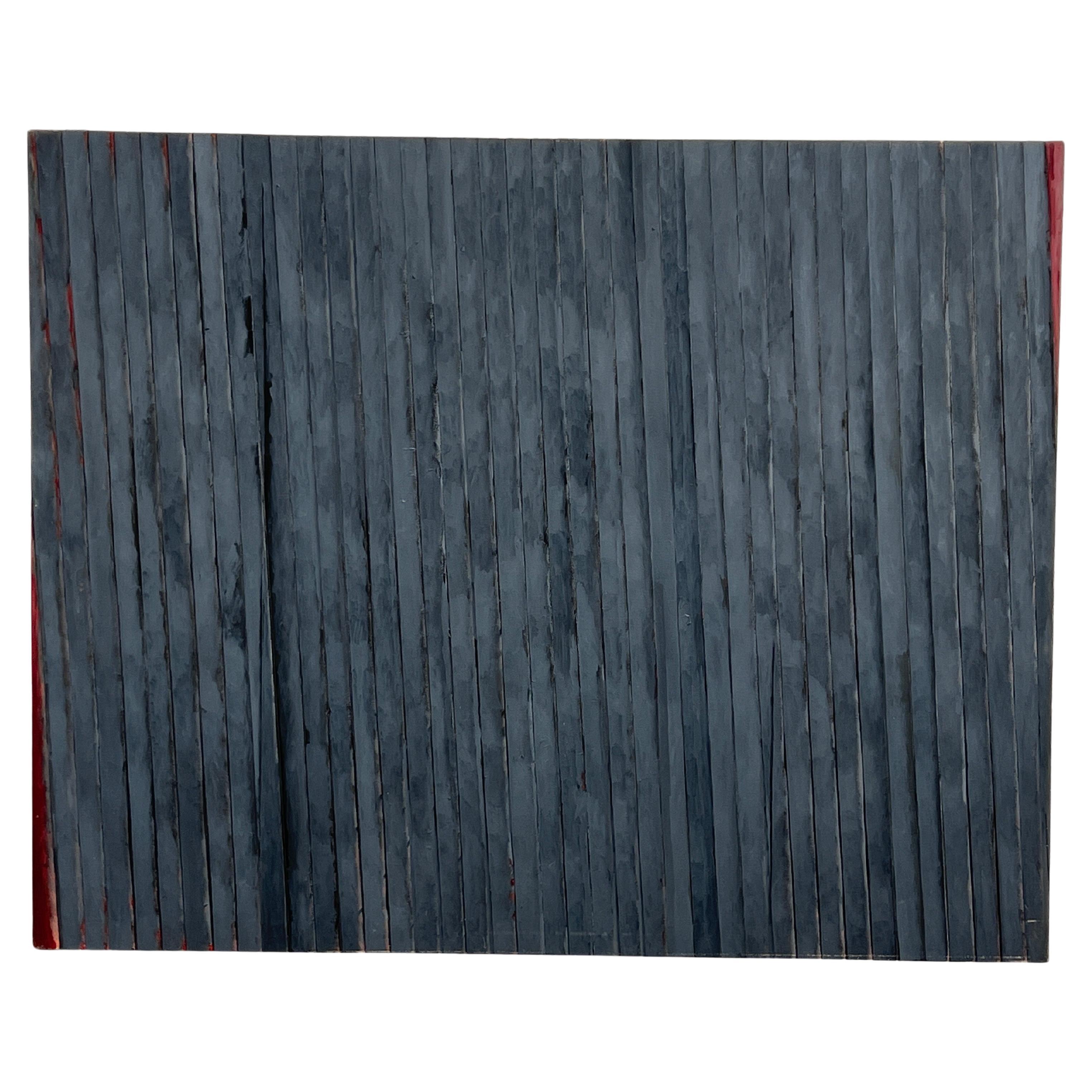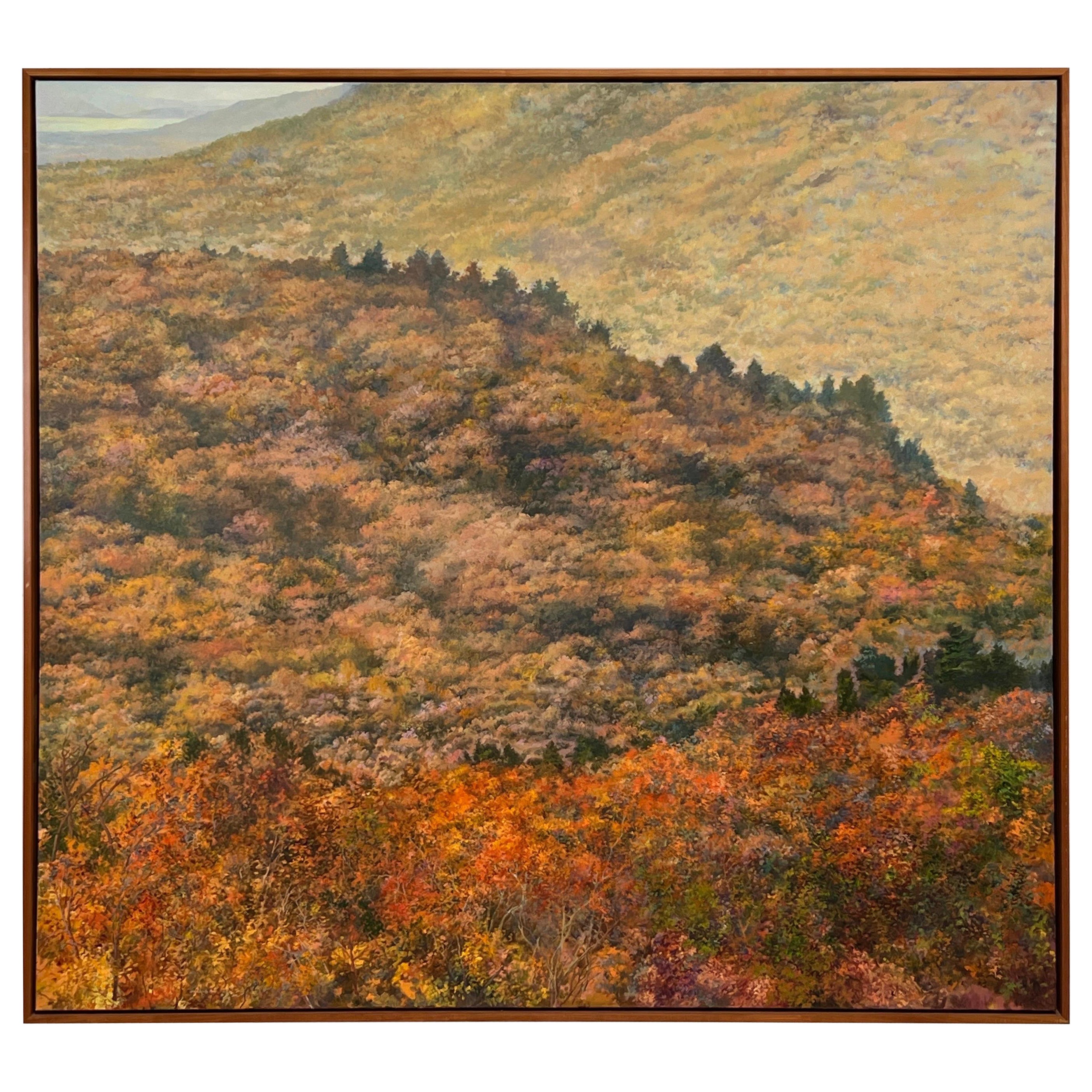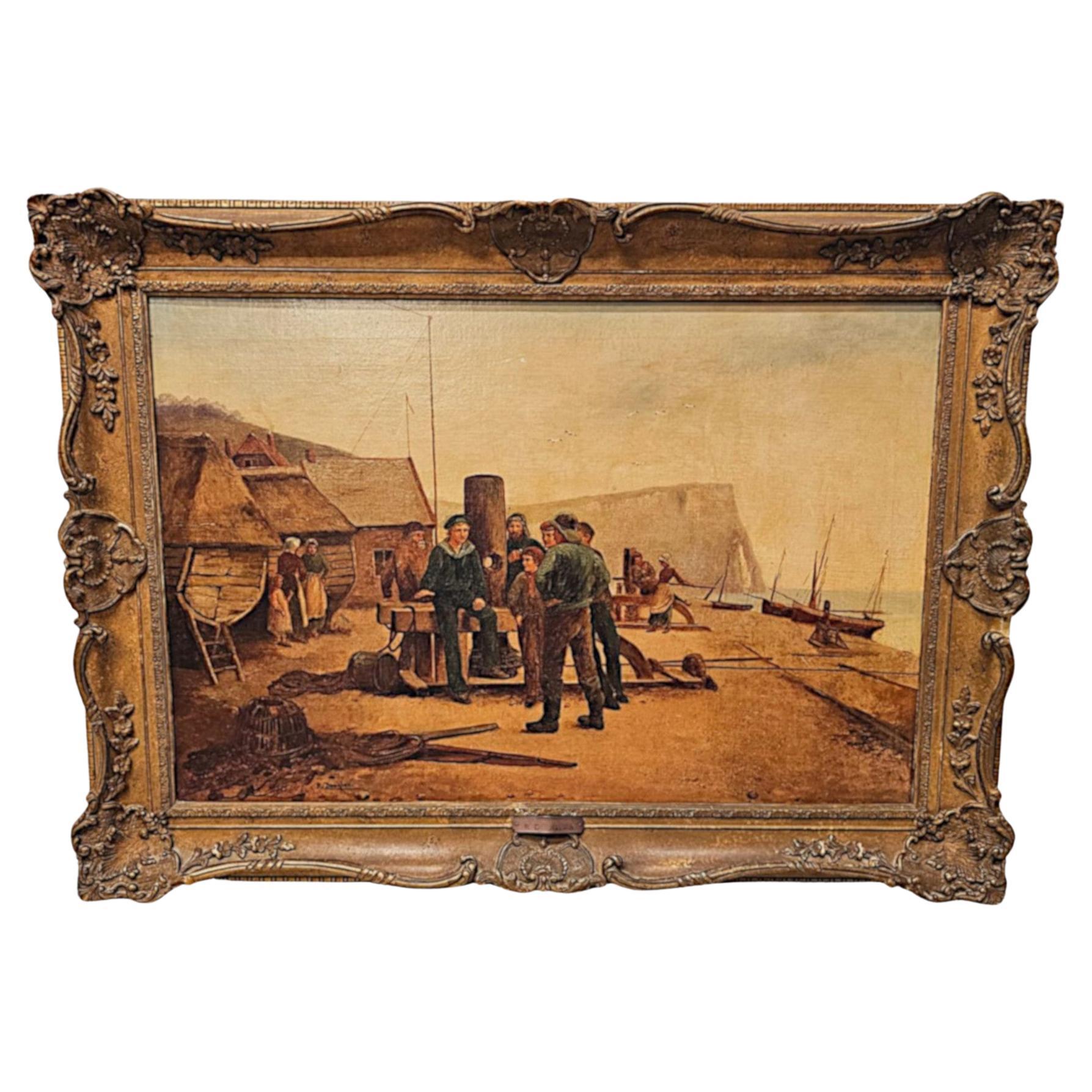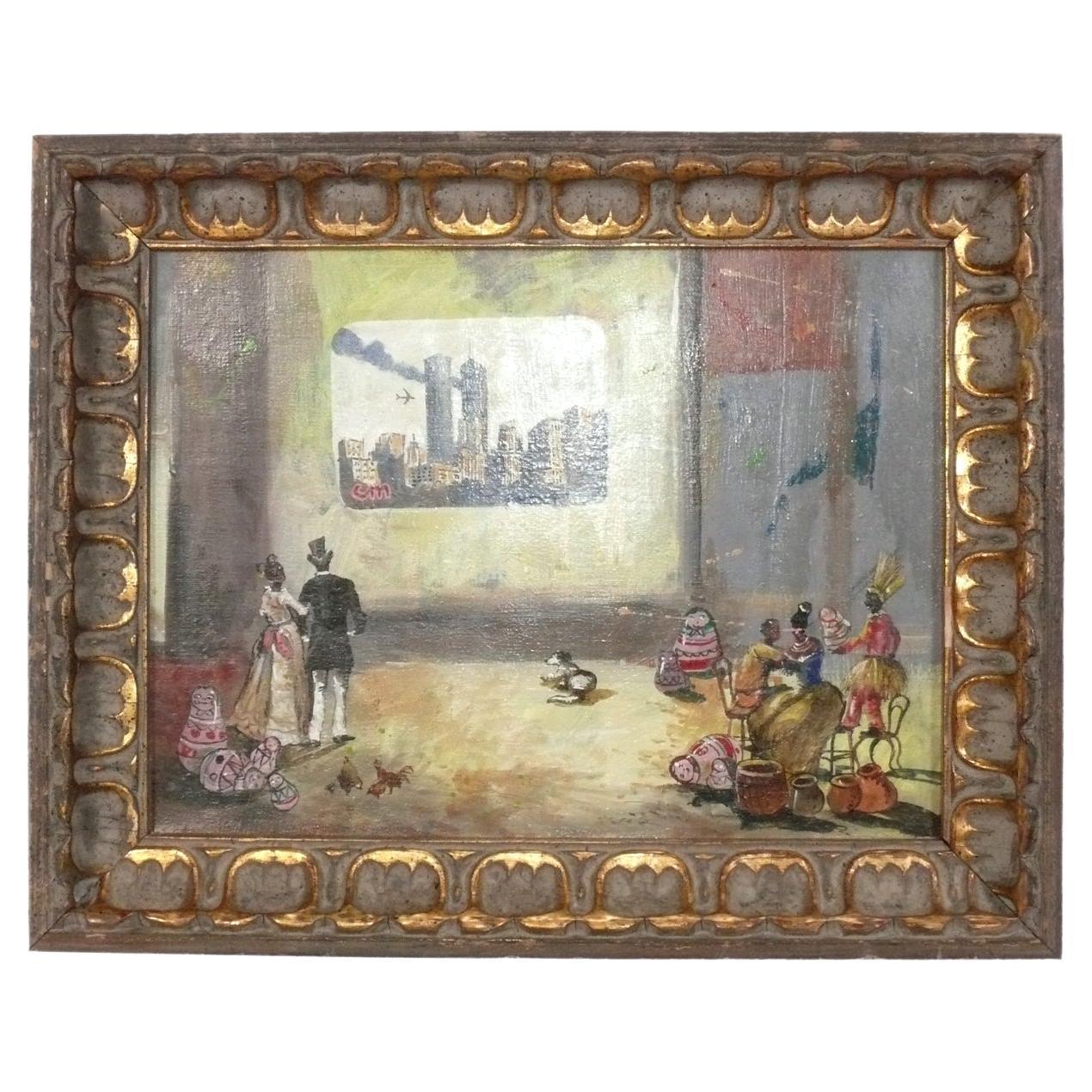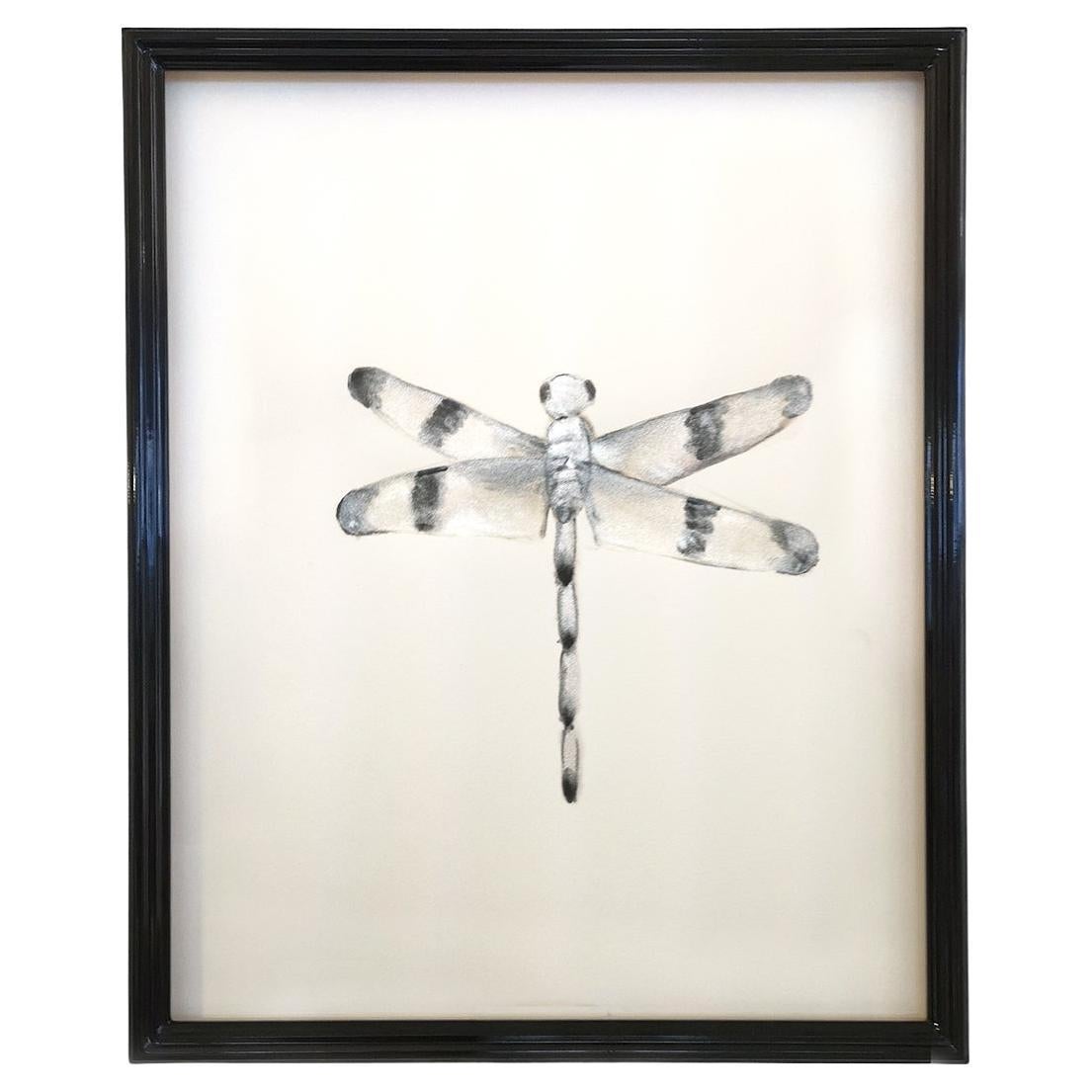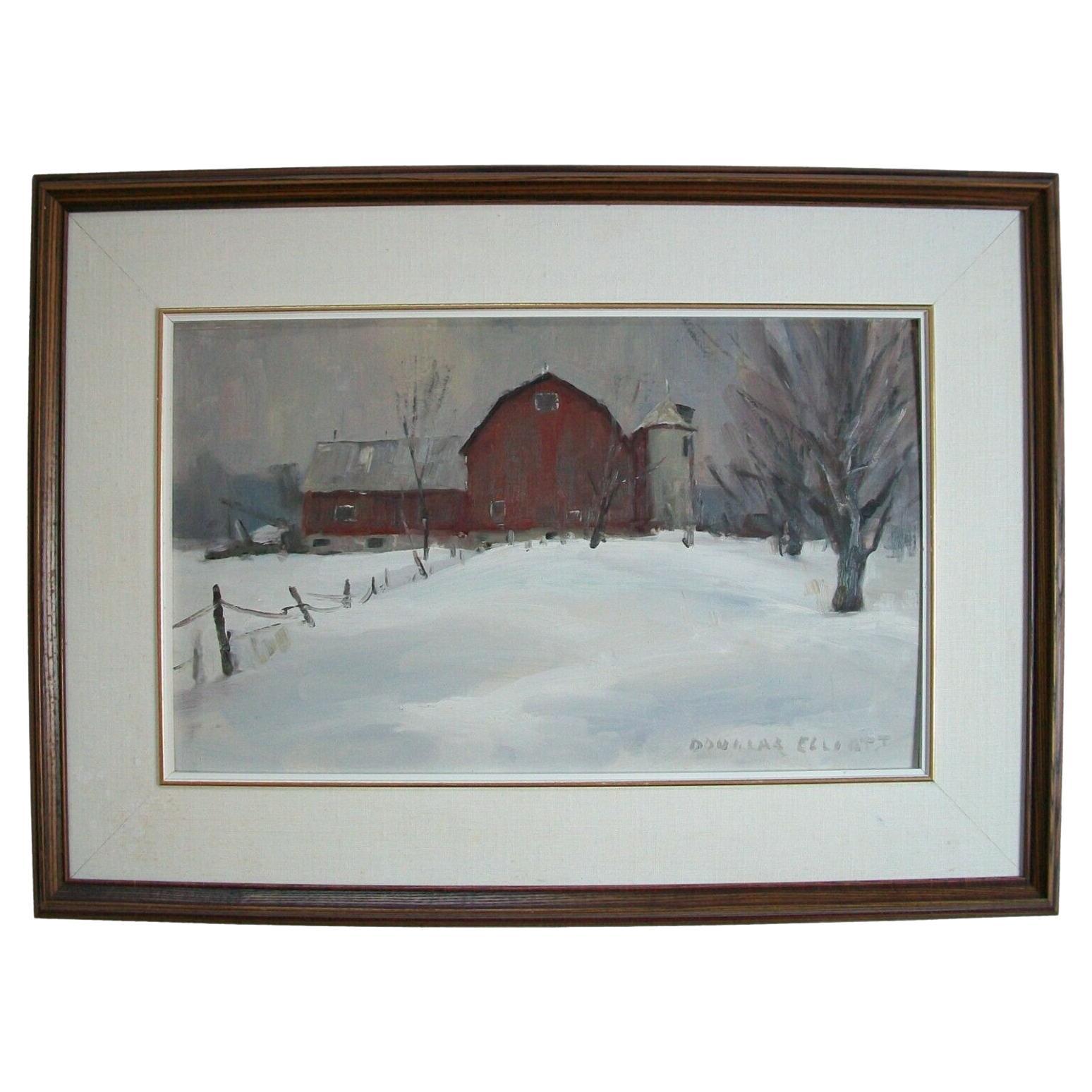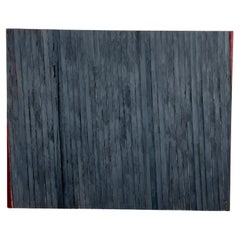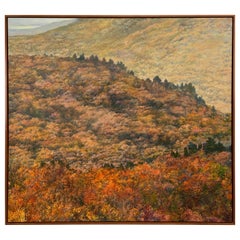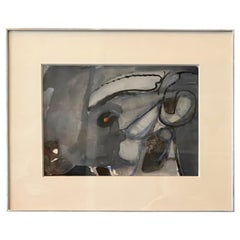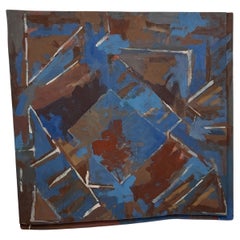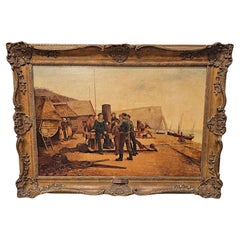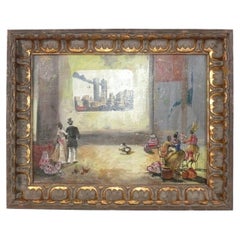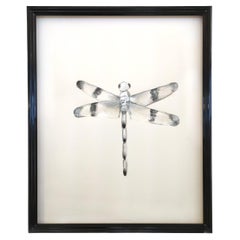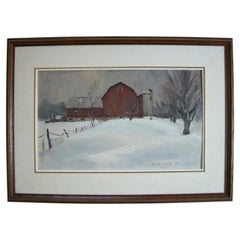Items Similar to 'Dragonfly Series #8', Painting by Douglas D. Craft
Want more images or videos?
Request additional images or videos from the seller
1 of 11
'Dragonfly Series #8', Painting by Douglas D. Craft
About the Item
While Douglas D. Craft's (American, 1924-2015) Dragonfly series is textured in appearance, it is merely a painterly illusion. 'Dragonfly #8' is a rhythmic series of vertical black strokes with red and blue undertones, creating an image of shimmering calm. Douglas D. Craft (1924-2015) was a prolific American artist and educator whose work resides in the permanent collections of the Museum of Modern Art, the Whitney Museum of American Art, the Art Institute of Chicago and the Smithsonian Institution in Washington, DC.
Provenance: From the GE Corporate Collection.
- Dimensions:Height: 48 in (121.92 cm)Width: 60 in (152.4 cm)Depth: 1 in (2.54 cm)
- Materials and Techniques:
- Place of Origin:
- Period:
- Date of Manufacture:1975-76
- Condition:Wear consistent with age and use.
- Seller Location:Dallas, TX
- Reference Number:1stDibs: LU851836686792
About the Seller
5.0
Recognized Seller
These prestigious sellers are industry leaders and represent the highest echelon for item quality and design.
Platinum Seller
Premium sellers with a 4.7+ rating and 24-hour response times
Established in 1999
1stDibs seller since 2008
491 sales on 1stDibs
Typical response time: <1 hour
- ShippingRetrieving quote...Shipping from: Dallas, TX
- Return Policy
Authenticity Guarantee
In the unlikely event there’s an issue with an item’s authenticity, contact us within 1 year for a full refund. DetailsMoney-Back Guarantee
If your item is not as described, is damaged in transit, or does not arrive, contact us within 7 days for a full refund. Details24-Hour Cancellation
You have a 24-hour grace period in which to reconsider your purchase, with no questions asked.Vetted Professional Sellers
Our world-class sellers must adhere to strict standards for service and quality, maintaining the integrity of our listings.Price-Match Guarantee
If you find that a seller listed the same item for a lower price elsewhere, we’ll match it.Trusted Global Delivery
Our best-in-class carrier network provides specialized shipping options worldwide, including custom delivery.More From This Seller
View All'Dragonfly Series #7', Painting by Douglas D. Craft
Located in Dallas, TX
At first glance Douglas D. Craft's (American, 1924-2015) Dragonfly series appears to be 3 dimensional, but it is merely a painterly illusion. 'Dragonfly #7' is a rhythmic repetition ...
Category
Vintage 1970s American Paintings
Materials
Canvas, Paint
'Off Little Tonche' Landscape Painting by Douglas James Maguire
Located in Dallas, TX
With his knowledge of the Luminist and Hudson Valley schools of 19th century American painting, Douglas James Maguire (American, b. 1940) gives...
Category
1990s American Paintings
Materials
Linen, Paint
'Maw' Painting by Stephen Greene
Located in Dallas, TX
American artist Stephen Greene (1917-1999) created "Maw", a mixed media work on paper, in 1961. In 1958, after hearing a series of lectures by influential art critic Clement Greenber...
Category
Vintage 1960s American Paintings
Materials
Paint, Paper
'Salvage', Painting by Farrell Brickhouse
Located in Dallas, TX
'Salvage' oil painting on assembled, salvaged wood, created by Farrell Brickhouse (American, b. 1949) in 1980. Signed, initialed and dated on reverse.
Category
Vintage 1980s American Paintings
Materials
Wood, Paint
Abstract Painting by Lamar Briggs
Located in Dallas, TX
Known as an abstract colorist, Lamar Briggs (American, 1935-2015) began experimenting with acrylic paints in the early 1970's. In this undated work on paper he's thinned his medium d...
Category
Vintage 1980s American Paintings
Materials
Paint, Paper
'Neo Formal', Painting by Gordon Moore
Located in Dallas, TX
The geometric imagery on this wedge-shaped acrylic on canvas by Gordon Moore (American, b. 1947) reflects the ongoing influence of New York City on his wo...
Category
Vintage 1980s American Modern Paintings
Materials
Canvas, Acrylic
You May Also Like
19th Century Oil on Canvas Painting by Rose Douglas
Located in Dublin, IE
A gorgeous 19th Century oil on canvas painting depicting a figurative maritime scene featuring a group of sailors, fishermen, women and children on a pier set amongst dwellings, sail...
Category
Antique 19th Century English Paintings
Materials
Canvas, Giltwood, Paint
Douglas Perez Castro Cuban Latin American Painting
Located in Atlanta, GA
Original oil painting on canvas by Douglas Perez Castro, Cuban, circa 2005. Castro’s works often focus on controversial issues within the Latin Am...
Category
Early 2000s Cuban Modern Paintings
Materials
Canvas, Wood
Hand Painted Dragonfly
By Buenaventura
Located in Madrid, ES
This charming and sophisticated wall decoration has been entirely hand-painted on 100% natural cotton paper, using the sumi-e technique inspired by ancient Korean paintings. Particul...
Category
21st Century and Contemporary Spanish Modern Contemporary Art
Materials
Cotton, Acrylic, Paper
Douglas Elliott, 'Near Markham, Ont.', Framed Oil Painting, Canada, C.1977
Located in Chatham, ON
Douglas Ferguson Elliott, O.S.P. (1916-2002) - 'Near Markham, Ont.' - Canadian Impressionist style winter landscape oil painting on Masonite panel - o...
Category
Late 20th Century Canadian Mid-Century Modern Paintings
Materials
Linen, Softwood, Masonite, Paint
$2,000 Sale Price
20% Off
Landscape Watercolor Painting Signed L Douglas, American, Early 20th Century
Located in San Francisco, CA
Beautifully painted landscape forest scene with stream in original giltwood frame, watercolor under glass. Signed in the lower right corner L. Douglas. American, early 20th century.
...
Category
Early 20th Century American Paintings
Materials
Glass, Wood, Paper
Mixed Media Painting by Steven Colucci, Sea Series
By Jackson Pollock
Located in New York City, NY
Steven Colucci’s iconoclastic approach to performance and the visual arts have not only long blurred the boundaries between these disciplines, but have challenged its most basic assumptions. The title of this show references a most rudimentary dance move -- the plié -- and our assumptions of what to expect in relation to this. Also the suggestion that we can simply press a button and a preconceived outcome will be courteously delivered -- a form of prefabricated belief in itself. Steven Colucci’s artwork turns such basic assumptions on their heads. Finding early inspiration in the New York school of abstract expressionists such as Jackson Pollock with his action painting, and then further by his professor -- a then young Vito Acconci while studying at the School
of Visual Arts, Steven Colucci went from exploring the raw existentialist experimentation of New York’s early painting and performance scenes, to investigating the other end of the spectrum -- the rigorously measured and controlled disciplines of pantomime and ballet; studying in Paris under the tutelage of world-famous Marcelle Marceau, and engaging with the concepts of dramatic movement pioneer and intellectual Etienne Decroux. Colucci has explained the difference between the extremes of pantomime and dance as being that pantomime forces movement via an internal capacity -- movement directed inward to the core of one’s self -- a source requiring extreme mental and physical control. Dance by contrast is an external expression; likewise requiring great precision, although instead an extension of self or sentiment that projects outwardly. While such historical ‘movement’ disciplines serve as foundation blocks for Steven’s artistic explorations, it is the realm in between that he is best known for his contributions -- an experimental movement and performance art that simultaneously honors, yet defiantly refutes tradition; rejecting a compartmentalization regarding art and movement, yet incorporating its elements into his own brand of experimental pastiche. Colucci’s performance works manifest
as eerily candy-coated and familiar, yet incorporate unexpected jags of the uncanny throughout, exploiting a sort of coulrophobia in the viewer; an exploration of a cumulative artifice that binds human nature against its darker tendencies; highlighting traditions of artifice itself -- the fabricated systemologies that necessitate compartmentalization in the first place.
It is evident in Steven Colucci’s paintings that he has established a uniquely distinctive pictorial vocabulary; a strong allusion to -- or moreso an extension of -- his performance works. Colucci’s paintings depict a sort of kinetic spectrum, or as he refers to them “a technical expression of physicality and movement”. Whereas the French performance and visual artist Yves Klein used the human body as a “paint brush” to demarcate his paintings and thereby signify a residue of performance, Colucci’s utilization of nonsensical numbers and number sequences taken from dance scores, as well as heat-induced image abstraction depicting traces of movement likewise inform his vocabulary. In the strand of the choreographed, yet incorporating moments of chance, Colucci’s paintings represent an over arching structure; a rhythm of being and state, yet detail erratic moments -- moments that
denote a certain frailty -- the edge of human stamina. Colucci’s paintings dually represent a form of gestural abstraction -- and also the reverse of this -- a unique anthropomorphization of varying states of movement -- that sometimes present as a temperature induced color field, at others are juxtapositions of movement and depictions of physical gestural images themselves. Colucci’s use of vernacular and found materials such as cardboard evoke his mastery of set design, and also reference a sort of collective experience of urbanity and the ephemeral. Such contradictions seem to permeate not only Steven Colucci’s artwork, but also are reflected in his person -- one
who grew up in New York’s Bronx during a zeitgeist moment in visual and performing arts in the 1960s -- one who shifts with ease from happenings and experiments in New York City, to his meticulously choreographed megaproductions at Lincoln Center or starring in the Paris ballet...
Category
2010s Paintings
Materials
Acrylic
